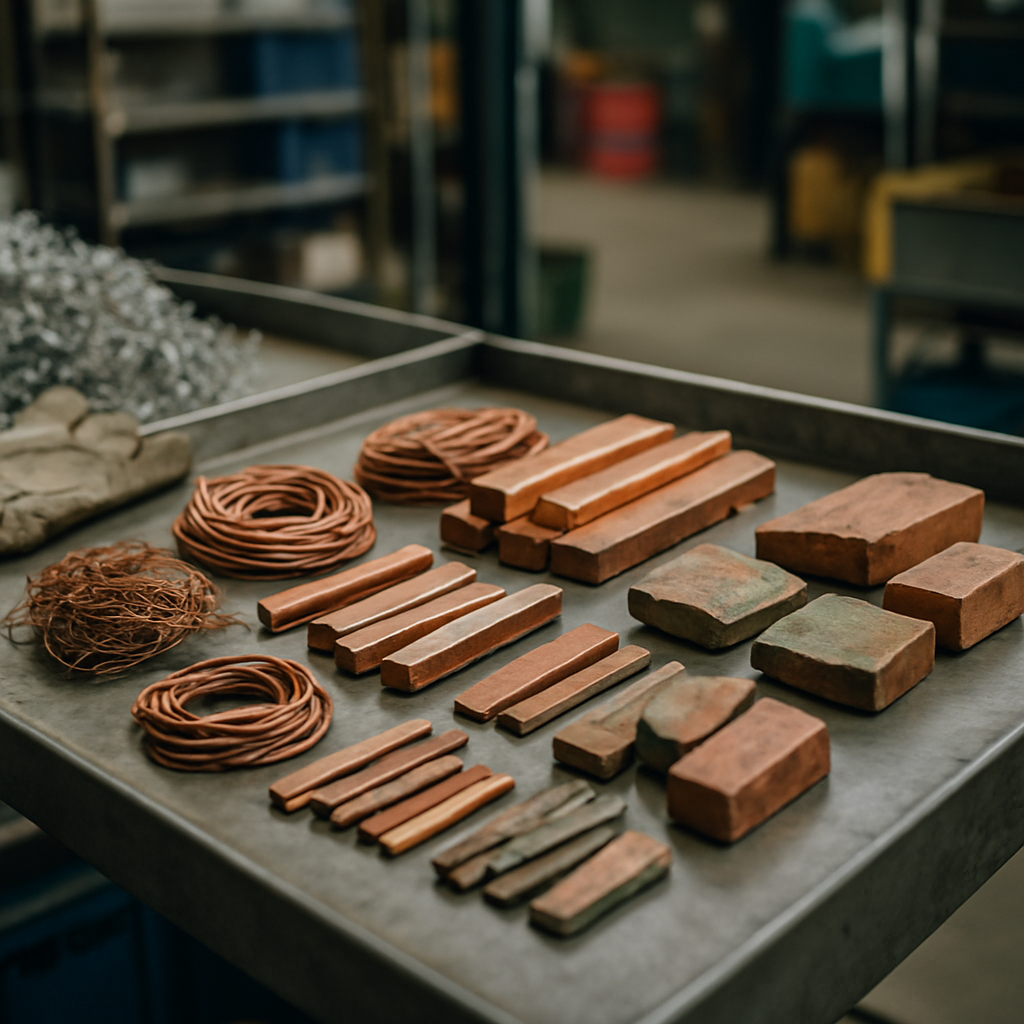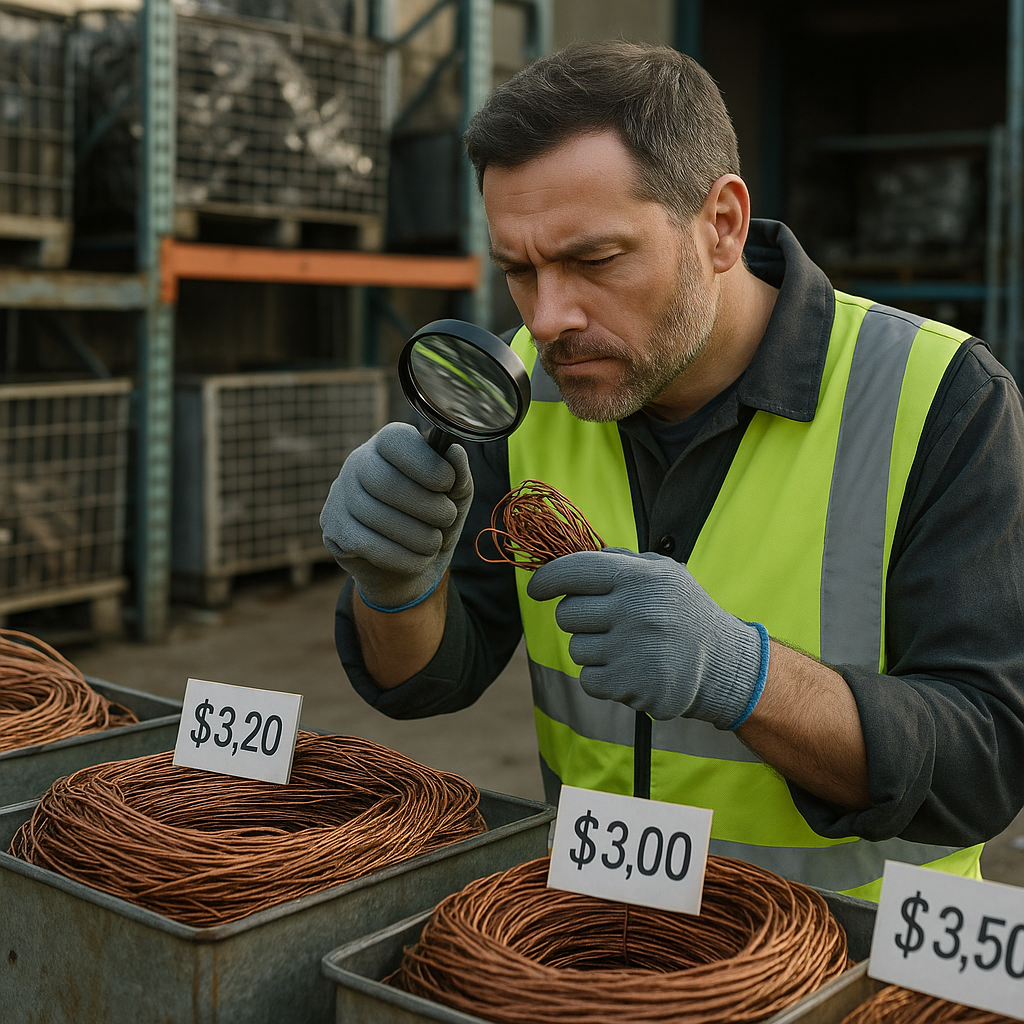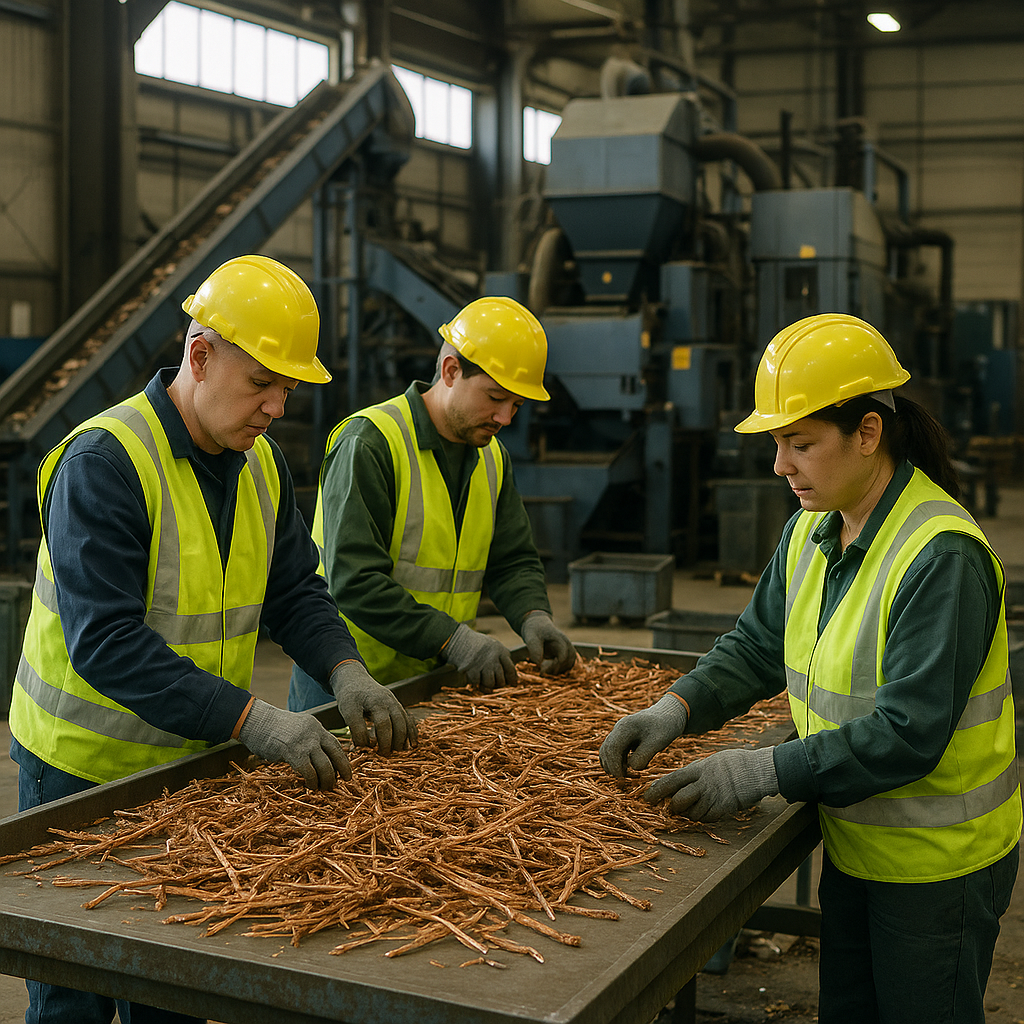5901 Botham Jean Blvd, Dallas, TX 75215
What Are Copper Scrap Grading Systems?
May 29, 2025In the metal recycling industry, copper scrap grading systems serve as the universal language for quality assessment. These standardized methods classify and determine the value of different copper materials based on specific criteria. The main factors influencing grading are the purity of the copper scrap and the percentage of copper recoverable during the melting process.
Copper’s infinite recyclability without quality loss makes it a highly valuable metal in the circular economy. This has led to the development of precise grading systems that affect pricing throughout the recycling chain. These systems, established decades ago, are now universally applied by scrap dealers across the United States.
Proper grading significantly impacts profitability. Higher-grade copper, such as bare bright copper, commands premium prices due to its superior purity and limited need for processing. Understanding these distinctions enables recyclers to maximize returns and negotiate better prices. For both small-scale sellers and industrial recycling operations, familiarity with these systems translates directly to improved financial outcomes and contributes to more sustainable resource management.
What are the Main Grades of Copper Scrap?

Copper scrap is classified into several grades based on purity, contamination level, and overall quality. Understanding these grades is crucial for recycling facilities and those looking to sell copper scrap for the best possible price.
Bare Bright Copper (No.1 Copper Wire Scrap)
Bare Bright Copper represents the highest quality of copper scrap available in the recycling industry. This premium grade features unalloyed, uncoated copper wire with a distinctive bright and shiny appearance.
These characteristics define Bare Bright Copper:
- Contains approximately 99.9% pure copper
- Must be completely free of paint, solder, and other contaminants
- Typically sourced from electrical wiring
- No tarnishing or oxidation is acceptable
- Commands the highest price in the market
No.1 Copper
Just below Bare Bright in quality, No.1 Copper includes clean, unalloyed copper items with minimal impurities. This grade maintains high value in the recycling market and is readily identifiable by its clean appearance.
Key attributes of No.1 Copper include:
- Minimum 95-99% copper content
- May show slight oxidation or tarnishing
- Commonly includes pipes, bus bars, and copper sheet metal
- Must be free of excessive attachments or coatings
- Second most valuable copper grade
No.2 Copper
No.2 Copper contains more impurities than the previous grades. While still valuable, this grade requires more processing before reuse, affecting its market price.
No.2 Copper is characterized by:
- Approximately 94-96% copper content
- May contain paint, coatings, or solder
- Often includes plumbing fixtures with attachments
- Copper tubing with brass fittings falls into this category
- Usually appears darker due to oxidation or contaminants
No.3 Copper (Low Grade)
The lowest quality of copper scrap is classified as No.3 Copper. This grade contains significant contamination and requires extensive processing to recover usable copper.
No.3 Copper typically features:
- 88-92% copper content
- High levels of contaminants like paint, tar, or solder
- Often includes roofing copper, gutters, and downspouts
- Significant oxidation or corrosion is common
- Processing costs reduce its market value substantially
Understanding these copper grades helps recyclers properly sort and process materials for maximum value recovery. Each grade requires different handling techniques and yields varying returns in the recycling market.
How Do Copper Scrap Grades Affect Pricing and Recycling?

The grading system for copper scrap is crucial for determining market value and recycling efficiency. These grades were established by the metal recycling industry to standardize copper evaluation across the United States and beyond.
Copper grades impact pricing through two key factors: purity level and recovery rate during processing. Higher purity means lower processing costs and greater material yield, leading to premium prices for top-grade copper.
Copper Grade Hierarchy and Pricing Impact
Bare Bright Copper is at the top of the value chain. This unalloyed copper wire contains about 99.9% pure copper and commands the highest market prices. Free from tarnish, oxidation, and insulation, its clean composition requires minimal processing before reuse.
#1 Copper follows closely in value. Consisting of unalloyed copper tubing, pipes, and bus bars at least 1/16 inch thick, this grade maintains high purity levels around 98%. The slight reduction in value compared to Bare Bright is due to minor processing requirements for recycling.
#2 Copper represents the middle tier in the copper scrap market. With 94-96% copper content, this grade may include items with paint, solder, or slight oxidation. The additional processing required to remove these impurities directly reduces its market value compared to higher grades.
At the bottom of the grading scale is #3 Copper (Low Grade). With copper content ranging from 88-92%, this heavily oxidized or contaminated material requires extensive processing before recycling. The substantial refining costs significantly diminish its market value.
The Economics of Processing Different Grades
The relationship between grade and price is clear when examining the recycling process. Lower-grade copper scrap requires more intensive melting and refinement to separate impurities and recover usable copper.
Recovery rate further impacts pricing. If 10,000 pounds of copper scrap enters the furnace but only 9,000 pounds of usable copper emerges after processing, the recovery rate is 90%. Higher grades consistently deliver better recovery rates, enhancing their economic value to recyclers.
Market fluctuations also affect copper pricing across all grades. Daily price variations respond to global supply and demand dynamics, particularly in the electronics and construction sectors. Regional factors and transportation costs can further influence local scrap yard rates.
Environmental Benefits of Efficient Copper Recycling
The environmental impact of copper recycling extends beyond resource conservation. Processing recycled copper consumes significantly less energy than extracting and refining virgin ore. Higher-grade copper requires even less energy to recycle, creating a smaller carbon footprint.
By properly sorting copper scrap into appropriate grades before recycling, the industry maximizes resource recovery while minimizing processing waste. This efficiency reduces the need for environmentally destructive mining operations and decreases landfill usage.
Copper’s infinite recyclability makes it a cornerstone of sustainable metal management. Unlike some materials that degrade through recycling cycles, copper maintains its essential properties indefinitely when properly processed.
Practical Implications for Recyclers
Understanding copper grading is essential for anyone involved in metal recycling. For scrap metal suppliers, proper identification and sorting can significantly increase the value of copper materials. Simple steps like removing insulation from wires or separating heavily oxidized pieces from cleaner copper can substantially improve returns.
For recycling facilities, accurate grading ensures appropriate processing methods and fair pricing structures. The standardized grading system creates transparency throughout the recycling chain, from individual suppliers to large industrial operations.
Recyclers can maximize profits by investing time in proper sorting and grading before selling copper scrap. The price difference between properly sorted copper grades often outweighs the additional labor involved in separation.
Conclusion: Mastering Copper Scrap Grading for Optimal Recycling

Mastering copper scrap grading systems is crucial for those in metal recycling operations. By accurately identifying different grades—from premium Bare Bright copper to No. 3 Copper—recyclers can maximize the value of their materials. Understanding specialized categories like insulated wire and properly sorting materials based on their characteristics ensures fair pricing and optimizes financial returns.
Beyond economic benefits, proper copper grading enhances recycling efficiency, requiring less energy than primary production. This efficiency supports a more sustainable circular economy for copper resources. By implementing systematic sorting and preparation strategies, businesses and individuals contribute significantly to conserving natural resources and reducing the environmental footprint of metal production. For expert assistance with your copper recycling needs, contact Okon Recycling at 214-717-4083.
